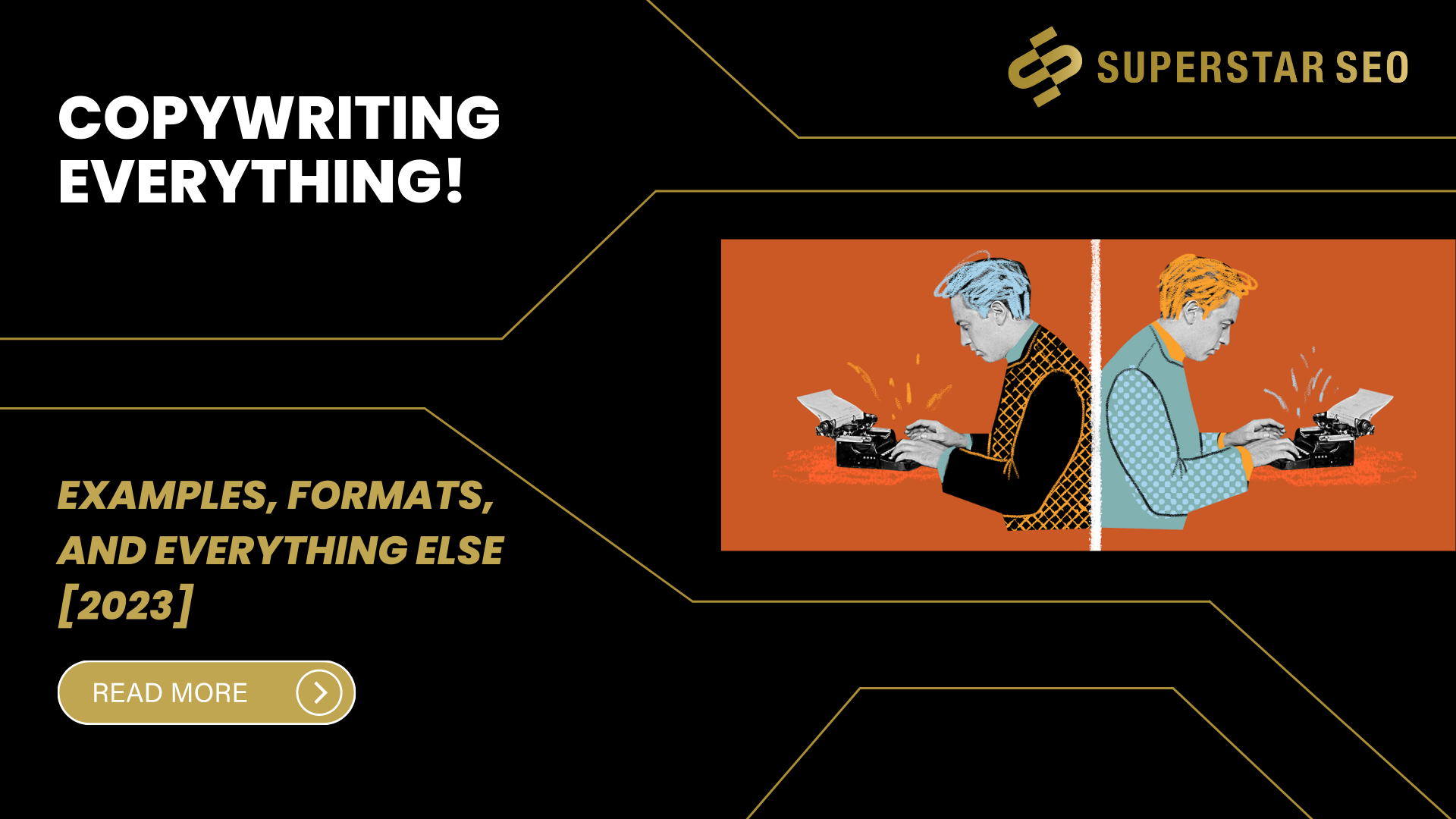Copywriting Examples, Formats, and Everything Else [2023]
Welcome to the world of copywriting examples – where creativity meets strategy and words do the selling! If you are a business person, read this article if you want to learn about copywriting services that you MUST delegate in 2024.
Let’s start with a story…
“It was a hot summer day, and the sun was beating down relentlessly on the pavement. Walking down the busy street, I couldn’t help but notice the crowd gathered outside a small store.
There, in the window, was a sign that read, “Limited time offer – buy one, get one free!” The store was packed with customers, all vying for the chance to snag a deal.
The words on the sign were simple yet effective… They had managed to create a sense of urgency and excitement that made me feel like I was missing out if I didn’t buy something.”
So, whether you’re a seasoned copywriter or just starting out, mastering the art of copywriting is essential to grab your audience’s attention and inspire them to take action.
We will share tips, tricks, and everything else you need to know to take your copywriting skills to the next level.
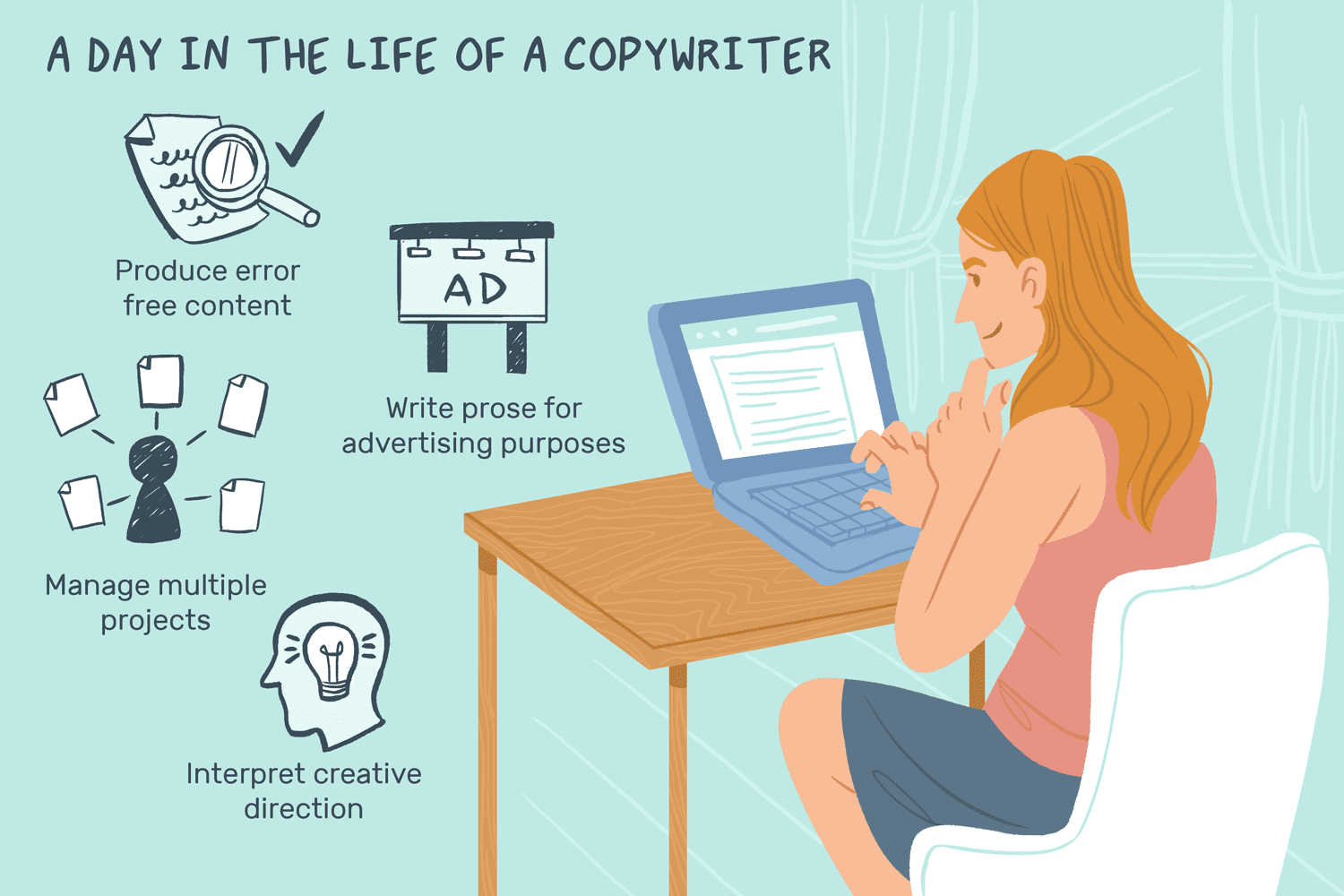
Copywriting Definition
It is the art and science of writing persuasive and compelling messages, known as “copy.” Additionally, it is designed to influence the reader or listener to take a particular action (such as buying a product or service, subscribing to a newsletter, or signing up for an event.)
Copywriting examples can be seen in various media, including print, digital, radio, and television, and it is a critical component of marketing and advertising.
Key Concepts in Copywriting
Target Audience: Knowing who you are writing for is crucial. Your copy should speak directly to the needs, desires, and pain points of your potential customers. Creating detailed buyer personas can help you tailor your message to specific segments of your audience.
Value Proposition: This is a clear statement that explains how your product or service solves a problem, delivers specific benefits, and why customers should choose you over competitors. It should be compelling and succinct.
Brand Voice: This is the unique personality that your brand communicates through your copy. Whether it’s playful, serious, or authoritative, maintaining a consistent brand voice helps build trust and recognition.
Call to Action (CTA): A CTA is a prompt that tells your audience what action you want them to take next. Effective CTAs are clear, urgent, and action-oriented.
Freelancing, Agency Work, or In-House Employment?
Are you a talented writer with a flair for persuasive language?
Do you want to turn your writing skills into a lucrative career?
Then you’ve probably considered the three primary copywriting examples of jobs: freelancing, agency work, or in-house employment.
Freelancing: Being Your Own Boss
As a freelance copywriter, you’re your own boss. You get to choose your clients, set your own rates, and work on your own schedule.
This level of independence is perfect for those who thrive in a flexible, autonomous work environment and are able to create copy that REALLY converts.
According to the latest data, 20% of freelance copywriters earn more than $100k.
And that’s something to consider.
Also, this is the perfect way to get started if you want to find copywriting jobs as a ghostwriter (where the big bucks are).
But, you’ll need to hone the skills that will help you land remote work and be self-motivated, organized, and comfortable with the business side of things.
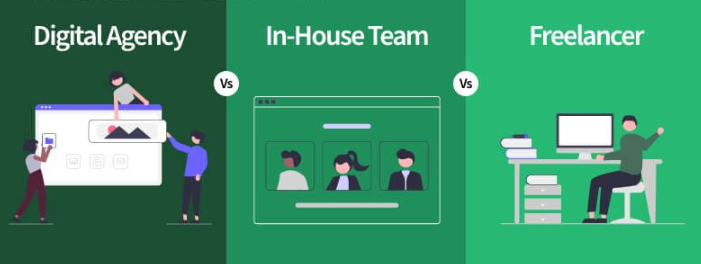
Agency Work: The Team Approach
If you thrive in a team environment, agency work is probably the right fit for you.
When you work for an agency, you’ll have a team of creatives to collaborate with, including art directors, designers, and other writers.
This can be a great way to build relationships and learn from other professionals in the industry.
Your salary may be anything between $47k and $88k.
In addition, you’ll be expected to work within tight deadlines and produce high-quality work consistently.
In-House Employment: The Stability of a Full-Time Job
If you’re looking for the stability and security of a full-time job, in-house employment is the right fit for you.
In-house copywriters work for a specific company and create content exclusively for that company.
This can be a great way to build strong relationships with a brand and become an expert in their industry.
You’ll also have a steady paycheck (ranging from 48k to $84k.)
But you’ll only be working on content for one brand, which means less variety in your work.
Mastering the Art of Copywriting: Essential Formats Every Writer Should Know
Copywriting is an art form that combines creativity, persuasion, and a dash of magic.
As a copywriter, you need to be a master of words, able to craft compelling content that resonates with your audience and moves them to action.
But how do you do that? It’s all about the formats… and the copywriting formulas.
Here are some copywriting examples (formats) so you better understand where to focus your skills.
Remember the copywriting definition? Copywriting can take many forms, from advertisements to web pages, emails to social media posts.
Now, let’s dive into the essential copywriting formats that every writer should know.
Direct Response Copywriting
Direct response copywriting is a form of copywriting that helps you get an immediate response from the reader.
This could be in the form of a sale, a sign-up, or a download.
The key to success in direct response copywriting is to create a sense of urgency and compel the reader to take action.
To achieve the response you desire, there are specific strategies you can implement in your direct response copywriting.
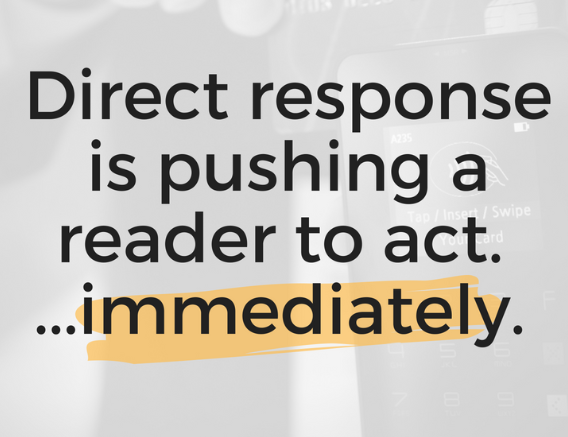
Email Copywriting
Emails are one of the most effective marketing channels available today, and the right email copy can make ALLLLL the difference.
This type of copywriting is in high demand as the returns are really, really good. It’s $40 per $1 spent!!
The goal of email copywriting is to persuade the reader to take action, whether that’s making a purchase or signing up for a newsletter.
However, to ensure people open your emails, you must follow specific email copywriting guidelines.
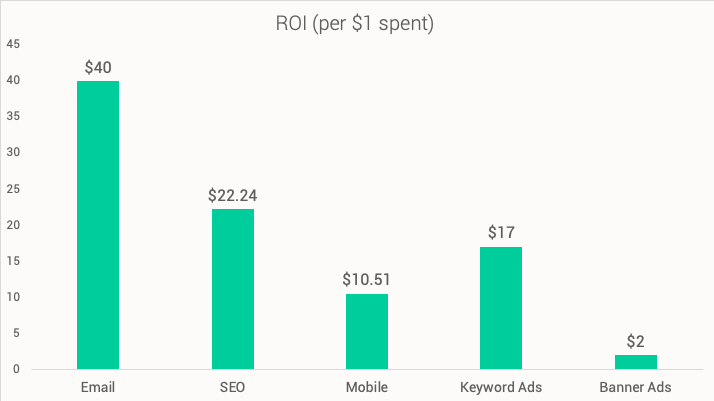
UX Copywriting
UX (user experience) copywriting is one of the newest copywriting examples, having emerged in the digital age.
(For comparison, email copywriting was introduced in 1978)
UX copywriting focuses on creating a seamless user experience by crafting copy that guides the user through the product or service in a clear and concise manner.
In practical terms…
It involves crafting concise, conversational copy that anticipates the user’s questions and concerns. And then answers them in a straightforward, easy-to-understand manner.
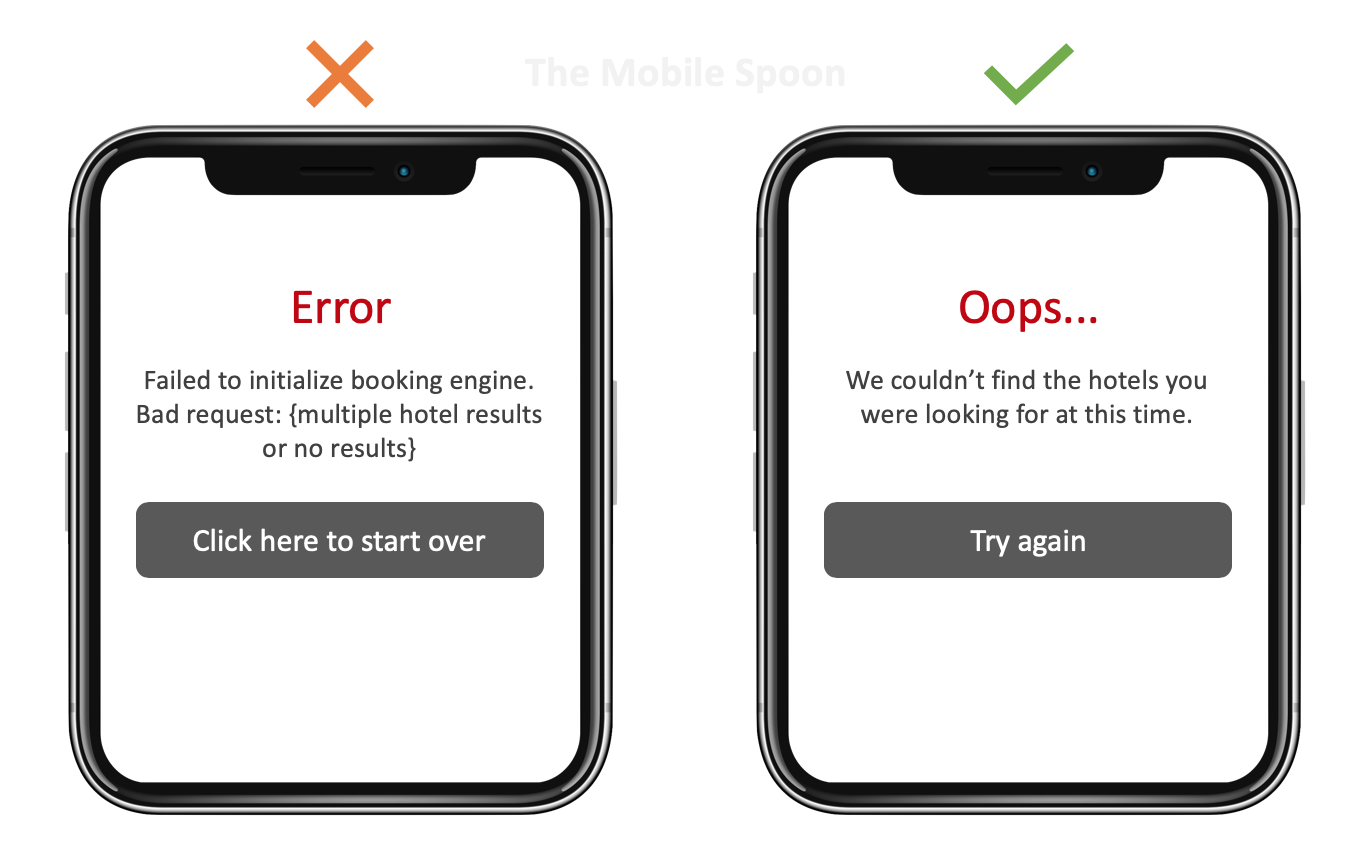
SEO Copywriting
SEO (search engine optimization) copywriting is a format that helps websites rank higher in search engine results.
This involves using keywords and phrases strategically throughout the copy to make it more visible to search engines.
Using a keyword research tool will help you identify the BEST keywords for your copy.
However, this is only one part of the SEO strategy, so keep that in mind before you raise your expectations about your ranking.
Product Descriptions
Product descriptions are crucial for e-commerce. Start with a strong product name and a compelling opening sentence that highlights the main benefit.
Detail features and benefits using bullet points, focusing on how the product solves problems or enhances life.
Include customer reviews for social proof and mention any awards or endorsements. Conclude with a clear call to action, encouraging the reader to buy or take advantage of a special offer.
Website Copy
Website copy encompasses all the content on your site, from the homepage to individual product pages. It should be clear, informative, and optimized for SEO.
Homepage
Your homepage should immediately communicate who you are, what you offer, and why visitors should care. Use strong headlines, concise copy, and clear navigation.
FAQ Page
An FAQ page addresses common customer questions and concerns, helping to reduce friction in the buying process. Use a conversational tone and organize the information logically.
B2B Copywriting
Business-to-business (B2B) copywriting is a format that appeals to businesses rather than individuals.
It is one of those best copywriting examples where you have to take a different approach.
Why?
In a B2B situation, businesses may need to purchase products or services in bulk. And that’s why they spend more time researching and comparing options before making a decision.
So, instead of relying on emotional appeals or flashy advertising, B2B content writing process must focus on providing clear and detailed information about the product or service you are selling.

Social Media Posts
Social media posts are vital for engaging your target audience on various platforms. Social media platforms like—Facebook, Twitter, Instagram, and LinkedIn—requires a tailored approach.
For example, Twitter’s character limit necessitates concise, punchy messages that quickly capture attention using hashtags and trending topics.
On Facebook and LinkedIn, you can use more extended narratives to share customer stories or industry insights, thus creating deeper connections.
Landing Page Copywriting
Landing page copywriting is a format that is specifically for… landing pages, which are web pages that aim to convert visitors into leads or customers.
The right landing page copy can make all the difference in the success of a marketing campaign.
To be effective, landing page copywriting must be clear, concise, and persuasive.
It should quickly communicate the value of the product or service and provide a compelling reason for visitors to take action.
This might involve:
Highlighting the benefits of the product or service.
Addressing common objections.
Or creating a sense of urgency or scarcity to encourage visitors to act quickly.
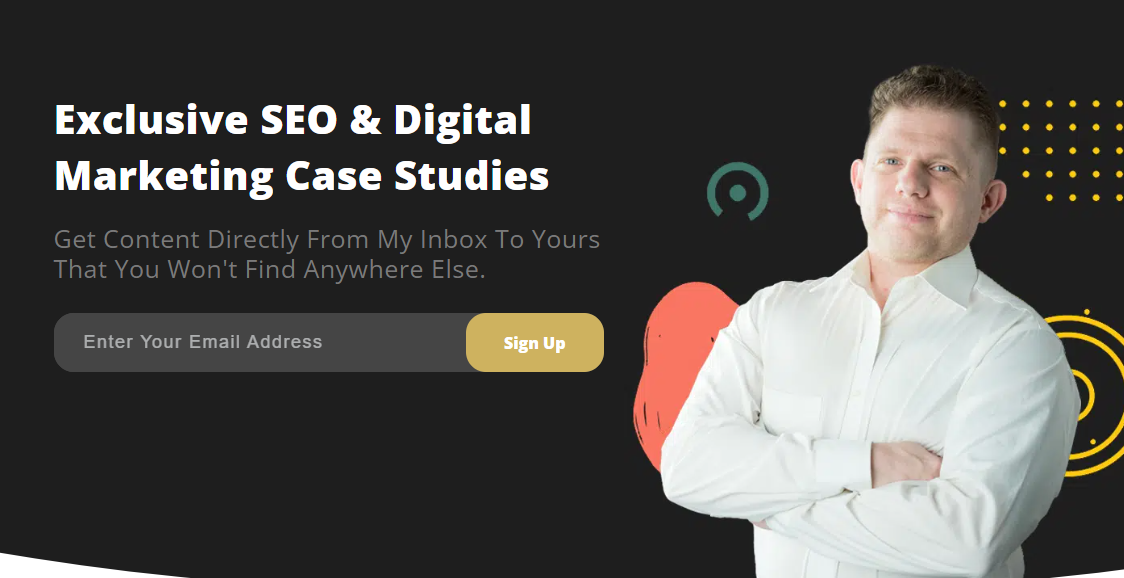
Tips for Becoming a Successful Copywriter
Becoming a successful copywriter requires a combination of skills, creativity, and persistence. Here are some tips to help you on your journey.
Develop Your Own Writing Style
Your writing style should be unique and reflect your personality. Practice regularly and experiment with different tones and approaches to find what works best for you.
Create a Swipe File
A swipe file is a collection of copywriting examples that inspire you. Regularly review and analyze these examples to understand what makes them effective and how you can apply similar techniques to your work.
Understand Your Brand Voice
Consistency in brand voice is crucial. Ensure your copy aligns with your brand’s personality and values, whether it’s formal, casual, humorous, or authoritative.
Focus on the Benefits
While features are important, focusing on the benefits of your product or service will better resonate with your audience. Highlight how your offering can solve their problems or improve their lives.
Use Clear and Direct Language
Avoid jargon and complex language. Clear, simple, and direct language is more accessible and engaging for your audience.
Incorporate Social Proof
Including testimonials, reviews, and case studies can enhance credibility and persuade potential customers to take action.
Address Pain Points
Identify and address your audience’s pain points directly. Show empathy and present your product or service as the solution to their problems.
Craft Engaging Headlines
Your headline is the first thing readers see, so it must grab their attention. Use action words, ask questions, or create a sense of urgency to draw readers in.
Use Short Sentences and Paragraphs
Short sentences and paragraphs improve readability and keep readers engaged. Break up large blocks of text with headings, bullet points, and images.
Continuously Learn and Improve
Copywriting is an ever-evolving field. Stay updated with the latest trends, study successful copywriters, and continuously seek feedback to improve your skills.
Bottom Line
We’ve covered the basics of copywriting and explored some of the top formats every writer should know.
Each one of these good copywriting examples mentioned requires a unique approach and set of skills to master.
But no matter what type of copywriting you’re working on, the core goal remains the same: to use language to persuade, inform, and entertain.
So whether you’re a freelance writer, part of an agency, or in-house at a company, keep honing your craft and exploring new techniques to stay ahead of the game.
Because, at the end of the day, copywriting is all about crafting words that captivate and connect with your audience.
And that’s the copywriting definition we can all get behind.



